The 6-Strings
Each of the six strings of the guitar represents a different note on the musical scale. As you will noticed the strings are different in thickness as well, starting for the 1st string, the thinnest, all the way up to the 6th string, the thickest.
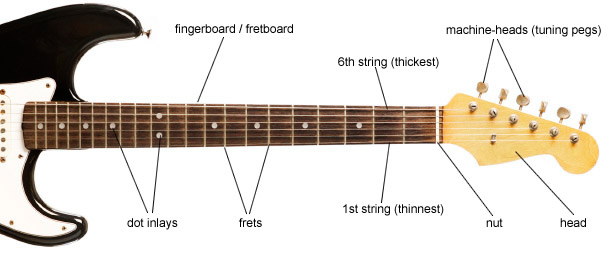
The strings are spread out across the width of the fingerboard and spans along each and every fret on the fingerboard. When the strings are played ‘open’ (that is, if they are plucked without pressing down on any frets) the notes for each are as follows:
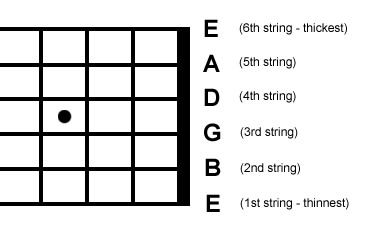
The Fingerboard and the Chromatic Scale
Each fret on the fingerboard acts as a marker and a divider to separate the different notes playable along a string. The different notes playable can be explained using the Chromatic Scale.
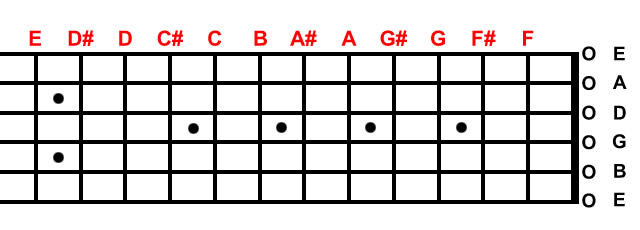
The chromatic scale can also be read like this:
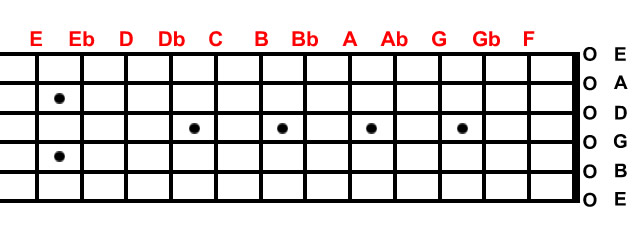
The notes we’re familiar with at the moment are: E, A, D, G, B, and E, which are the notes of the 6 strings when plucked open. Don’t worry about what most of the letters or symbols mean for now. We’ll explain the necessary concepts later in this guide. What’s important now is that each fret represents a change in note along the fingerboard.
Tuning a guitar
One of the first things a guitarist must do before playing a guitar is to check whether the strings are in tune. Nobody likes to listen to out-of-tune songs, and no guitarist should play an out-of-tune guitar. Simple as that! There are several methods to tune a guitar perfectly. We’ll show you how!
Tuning from another instrument, e.g. Keyboard
An electronic keyboard (or a digital piano) will permanently be in-tune so it’s always a good method to use. This is done by playing a note on the keyboard and then adjusting the machine-head of the guitar until the note of the string matches the note on the keyboard. Using this method will also help you develop your own sense of pitch.
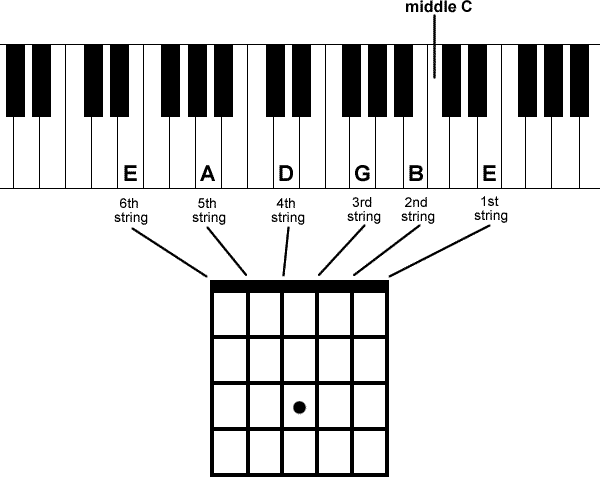
An electronic guitar tuner
The easiest method is using an electronic guitar tuner. They come in all shapes and sizes and are usually small enough to be carried in your guitar case wherever you go.
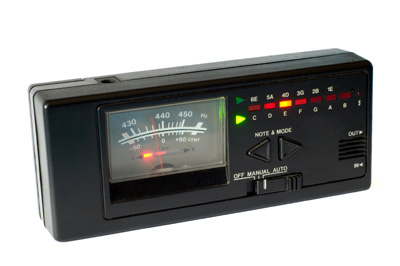
Tuning a guitar to itself
If you already have one guitar string in tune, or if one of the strings are out of tune, you could tune the rest of the strings in relation to each without any tuning aids. This clever technique is sometimes known as the ‘5th fret method’ and is an important concept for the beginner guitarist to learn. An out of tune guitar never sounds good, so the next time you pick up a guitar and it’s out of tune, you could easily tune all the strings in relation to each and be able to play a complete tuned guitar on the spot!
The trick is to locate the fret that produces the matching note of the adjacent string. This is usually the 5th fret. For example, the 5th fret of the bottom ‘E’ string is the same note as the open ‘A’ string. So, if we already have the bottom ‘E’ string in tune, we can play the string on the 5th fret and then adjust the open ‘A’ string to match that note. The principle can be applied to the rest of the strings using the following diagram:
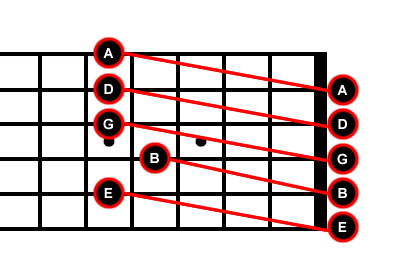
Note that on the ‘G’ string, the 4th fret is used instead of the 5th fret.
We will learn later in the guide that, by using this simple principle of matching notes on different strings and frets, simple tunes can be arranged and played in any position along the entire fingerboard!
